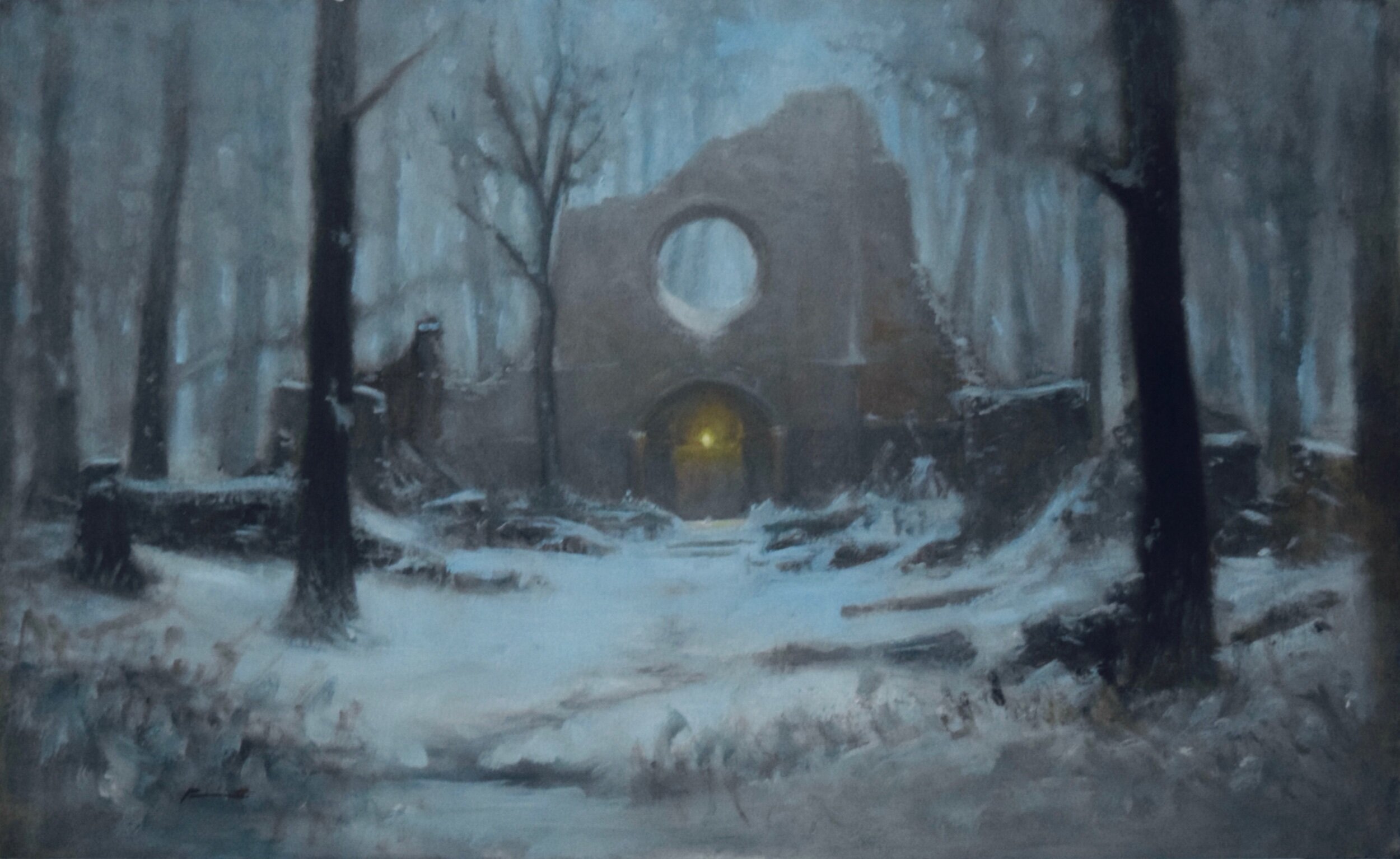Waking Breath 30”x50” oil on linen over acm panel, 2024.
“Narnia, Narnia, Narnia, awake. Love. Think. Speak. Be walking trees. Be talking beasts. Be divine waters.” - C.S. Lewis, The Magician’s Nephew
This was the premise set for me regarding this commission, the dawn of a new world sung to live by its creator. The patrons reached out to me looking for a large-scale painting capturing their love of light, whimsical trees, Texas landscapes, and Virginia beaches.! As soon as I received this prompt I knew I couldn’t pass it up. And what a challenge to craft something inspired by such a scene. Little did I know that this prompt would draw upon more of my knowledge and skill set than I’d previously utilized.
While this landscape is based on a real place it needed some more tweaking, more conceptualization, to weave together all of the requested elements. And I didn’t even arrive at that conclusion until after some rigorous iteration. I worked through several compositions and scenic ideations that touched on the prompt, but I wasn’t quite hitting the mark. I rifled through my sketches for other projects and my Texas landscape photos. I also considered setting the scene in Cargo Lake, Virginia's First Landing State Park, or some amalgam thereof. As beautiful as those ideas were, something else beckoned me.
The previous summer my family and I ventured south to Rockport, TX to meet my grandparents and uncle for a little family vacation. We’ve been here before, but it is always a fresh shine of paradise each new trip. Part of Rockport’s allure are the windswept live oak trees in the local Rookery. I’d collected a myriad photos of these trees and even caught an angle in Plein Air. One of these shots grabbed my attention. Using some collage techniques, I combined the trees with a shot of the nearby canal inlet. Taking some artistic license I was able to craft an image that closely resembled all points of my patrons’ idea. And as soon as they saw the sketch, they fell in love with it! I was so excited to create this large-scale landscape for them, and using my full skill set to bring this piece to life was an exhilarating experience.









